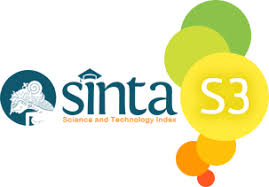Ramadan dan Promosional: Strategi Komunikasi Pemasaran PT Unilever Indonesia Tbk
 Abstract views: 3671
,
Abstract views: 3671
,
 PDF downloads: 10017
PDF downloads: 10017
Abstract
The purpose of this research is to know marketing communication strategy conducted by PT. Unilever Indonesia Tbk. using media webpage in increasing sales especially in the month of Ramadan. This research uses descriptive research type using qualitative method. Data collection techniques used in this study are literature study and field study of field observation (field obersvation) and depth interviews (depth interview) on the parties who play an important role in PT. Unilever Indonesia Tbk. Based on the results of research, found that marketing communication strategy conducted by PT. Unilever Indonesia through media webpage is known to be quite effective in increasing consumer buying interest and increasing sales during the session. By using marketing mix on E-marketing Mix that is, Product (product), Price (price), place (place).
Keywords: Marketing Communication, Webpage, PT. Unilever Indonesia Tbk
References
Herdiana Abdurrahman, Nana, dan Achmad Sanusi. 2015. Manajemen Strategi Pemasaran. Bandung: CV Pustaka Setia.
Husein, Umar 2000. Riset Pemasaran Perilaku Konsumen. Jakarta: PT. Gramedia Pustaka Utama.
Kertajaya, Hermawan 2009. New Wave Marketing, Jakarta: PT. Gramedia Pustaka Utama.
Purtiwi, N. P. 2018. Menelusuri Pemetaan Komunikasi Pemasaran Kontekstual. Jurnal Studi Komunikasi, 2(3), 403-419.
Rachim, M. M. I., Yenny, Y., & Susilo, D. 2019. MENDEFINISIKAN ULANG VISUALISASI KESEGARAN DALAM IKLAN MINUMAN RINGAN: SEMIOTIKA SPRITE “KENYATAAN YANG MENYEGARKAN”. Jurnal Komunikasi Universitas Garut: Hasil Pemikiran dan Penelitian, 4(2), 23-32.
Riyadi, S., Sufa, S. A., & Susilo, D. 2016. Strategic Marketing of Video on Facebook: Impacting Promotion of Malang Strudel Research Brief. Retrieved on: http://repository. unitomo. ac. id/296/1/JOERNAL, 20.
Zulaikha, Z. 2017. Perlukah Branding pada Sekolah? Studi Kasus pada SMP Swasta di Surabaya. Jurnal Komunikasi Profesional, 1(2).
Copyright (c) 2019 Jurnal Komunikasi Profesional

This work is licensed under a Creative Commons Attribution-ShareAlike 4.0 International License.

Jurnal Komunikasi Profesional is licensed under a Creative Commons Attribution-ShareAlike 4.0 International License.
1. Proposed Policy for Journals That Offer Open Access
Authors who publish with this journal agree to the following terms:
- Authors retain copyright and grant the journal right of first publication with the work simultaneously licensed under a Creative Commons Attribution License that allows others to share the work with an acknowledgment of the work's authorship and initial publication in this journal.
- Authors are able to enter into separate, additional contractual arrangements for the non-exclusive distribution of the journal's published version of the work (e.g., post it to an institutional repository or publish it in a book), with an acknowledgement of its initial publication in this journal.
- Authors are permitted and encouraged to post their work online (e.g., in institutional repositories or on their website) prior to and during the submission process, as it can lead to productive exchanges, as well as earlier and greater citation of published work (See The Effect of Open Access).
2. Proposed Policy for Journals That Offer Delayed Open Access
Authors who publish with this journal agree to the following terms:
- Authors retain copyright and grant the journal right of first publication, with the work [SPECIFY PERIOD OF TIME] after publication simultaneously licensed under a Creative Commons Attribution License that allows others to share the work with an acknowledgement of the work's authorship and initial publication in this journal.
- Authors are able to enter into separate, additional contractual arrangements for the non-exclusive distribution of the journal's published version of the work (e.g., post it to an institutional repository or publish it in a book), with an acknowledgement of its initial publication in this journal.
- Authors are permitted and encouraged to post their work online (e.g., in institutional repositories or on their website) prior to and during the submission process, as it can lead to productive exchanges, as well as earlier and greater citation of published work (See The Effect of Open Access).



